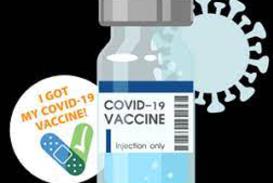BE A HEALTHCARE HELPER AND HEALTHCARE HERO: GET A FLU SHOT TODAY
by John G. Baresky on 11/23/20
Each year flu cases begin to emerge in mid-to-late Fall. Flu season usually peaks in December through February but can still have measurable impact into May and clinically speaking, flu cases can occur year-round.
How serious is the flu?
Flu illness can result in significantly uncomfortable personal wellness issues (aches, coughs, fever, nausea, etc.) plus missed days of school, work as well as cancellation of work or vacation travel plans and other activities.
On a global basis, The World Health Organization estimates there between 3 million and 5 million flu cases annually that result in between 290,000 and 650,000 fatalities. In the United States, according to the National Institutes of Health (NIH), flu illness results in about 36,000 deaths and roughly 200,000 hospitalizations annually.
Getting a flu shot helps nurses, doctors and the healthcare organizations they work for
While flu shots are not always 100% effective, it is believed the vaccine helps reduce the severity of symptoms for those persons that wind up getting the flu although they received the vaccine. Anything that helps reduce the number of flu-related physician office appointments and/or hospital admissions is important as the nation and the world continue to battle the COVID-19 pandemic. Less flu patients means medical professionals can focus more on COVID-19 and other seriously ill patients.
What is the difference between flu and COVID-19?
While there are some similarities between flu and COVID-19 symptoms and both illnesses are triggered by unique viruses, there are distinct differences. Johns Hopkins Medicine has published this helpful and easy to understand article on the differences between flu and COVID-19.
What kind of flu vaccines are available?
Generally speaking, according to the CDC there are inactivated influenza vaccine (IIV), recombinant influenza vaccine (RIV) or live attenuated nasal spray influenza vaccine (LAIV4) options. Patients should talk with a healthcare professional to determine which one is best for them.
Where can patients get a flu shot?
Flu vaccines are more widely available than ever before and they are now often covered by employer and commercial health plan insurance as well as government (Medicaid, Medicare, DHA/TRICARE, etc.) plans for low or zero copays.
Based on economic and employment status, some individuals may qualify to receive their flu vaccine for free. Patients should contact their insurance plan, doctor or pharmacist as well as local government public health authorities, community health centers and nearby hospitals for more information.
VaccineFinder is a helpful and authoritative resource
Supported by Boston Children's Hospital, The Centers for Disease Control and Prevention (CDC), Harvard Medical School and HealthMap, VaccineFinder helps persons find out where to get numerous types of immunizations including flu shots nationwide. It also provides factual information about each type of vaccine it features in its list. Visit VaccineFinder to learn more!
What else can you do to reduce the chances of getting the flu?
To help further minimize the chances of getting the flu in addition to getting a flu shot, these are some easy steps to follow:
- Avoid close contact with persons who are sick (social distancing!)
- Cover your nose and mouth when you cough
- Wash your hands frequently
- Sanitize devices (mobile and house phones, computer keyboards, television remote controls, automobile knobs, levers and switches) plus surfaces like desktops, countertops, door handles and other areas that are frequently touched with hands or closely exposed to coughs or sneezes
- Do not go to work or school if you are sick
- Avoid touching your nose, face or eyes
- Until the CDC and other healthcare authorities recommend otherwise, always wear a mask in places where social distancing is not possible plus places where you work, shop or conduct other routine daily activities outside of your home

